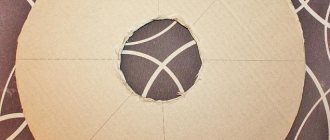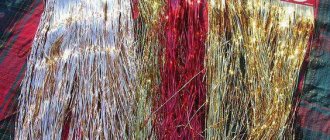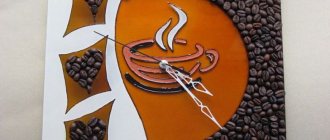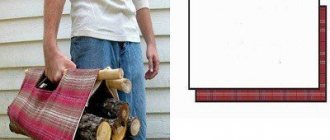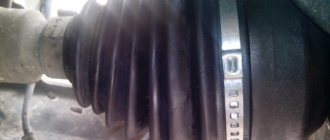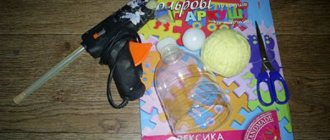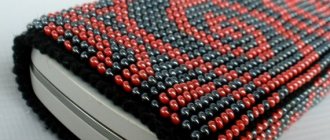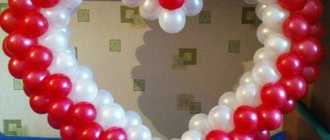The desire to make a car with your own hands arises from inspiration and motivation.
This could be an expensive sports car that you cannot afford to buy, or a desire to create a car with your own design. There are several ways to realize your dream. In this article I will talk about how to make a car with your own hands. Let's look at how a model base for molding a body is created, methods for making a car body, and also how you can assemble a car with your own hands from a ready-made kit (kit-car). Content:
- What do you need to know to make a car with your own hands?
- How to make your own car from scratch?
- Making a full-scale base model for creating a body
- How to create a car body with your own hands
- Kit car
- Registration of a homemade car
What do you need to know to make a car with your own hands?
The process of creating a car with your own hands cannot be called simple. Even well-known automakers sometimes make mistakes in the calculations and assembly of cars. However, if you have a great desire and ability to work with your hands, then using available materials and tools, you can make a car yourself. Among other things, this requires strong will and perseverance, then you can get impressive results.
The basic knowledge and skills that are needed are: understanding of the structure of a car, the ability to work with metal, fiberglass and putty, the ability to use a welding machine, basic knowledge of car electrics.
Some things you don't know how to do, you will have to learn in the process of creating a car. A lot can be learned from guides and information on the Internet. This site contains articles about cars built by amateurs who have little experience and learned everything in the process of building a homemade car. Here are two examples: an article “about the creation of a dragster stylized as a Ferrari Enzo” and a second article “about the creation of a Scorpione car.” Sometimes it will be wise to seek the help of specialists. Think about what you can do yourself, and for which stage it is better to involve another master. Many people want to think that they are first-class jacks of all trades and can do everything on their own, without requiring help. This is sometimes the reason why a project drags on for too long. After all, what an experienced professional can do in a day, an amateur can take a week, or even longer. For example, if you don’t know how to paint, then you can prepare the body for painting yourself, and take the car to a painter for painting. Or, covering the interior with upholstery material can be entrusted to specialists in this matter. This way, the overall process of creating a car will not seem unrealistic.
§ 1. What to make the base from.
Anything can serve as the basis for your miniature work.
• Fiberboard, chipboard, OSB, plywood - excellent materials on which a model or diorama will last for many years and perhaps even remain as a keepsake for future generations. If you are making a small diorama for the first time, for example, for a school or kindergarten, even a kitchen cutting board will do. By the way, they now come not only in wood, but also in plastic.
• If your child was given the task “to make a model” at school, but there is not enough time and you are faced with the task of completing the task from scrap materials with the least amount of labor, then a sheet of thick cardboard (for example, from a shoe box) or a picture frame with which always includes a sheet of the same fiberboard, and the frame itself will give a more finished look to your work. Let us clarify that a cardboard base is only suitable if the product is not heavy.
• If you are thinking about how to make a model with your own hands, and not just a simple one, but with internal lighting, or its presentable appearance is very important, for example, for an exhibition, then consider the option of a ready-made model base. For you, we have prepared a whole series of the most common sizes of Euro dummy bars made from lightweight but durable materials. The bottom cover is removable, which allows you to hide wiring elements inside (wires, power supply, batteries, etc.). The upper base is covered with gray vinyl and already edged with an elegant white profile. All you have to do is create!
Workshop and tools
You need to have a warm workshop with sufficient free space.
Making a car with your own hands requires the necessary tools. Special tools and machines make the job faster and easier, but you can do without them.
Here are the basic necessary tools that you need when creating a car with your own hands:
- It is necessary to have a good workbench with a large vice.
- Complete set of hand tools
- Drill, or better yet, a vertical drilling machine
- Bulgarian
- Welding machine (preferably semi-automatic)
- Compressor. For painting and for the operation of pneumatic tools.
- Spray gun
- Clamps of different sizes (for securing parts before welding)
- Mallets of various sizes and shapes, hammers and supports for forming metal (in the case of creating a body from sheet metal).
- English wheel machine and sheet metal bending machine (for easier sheet metal forming). As mentioned earlier, you can do without these machines, hammers and mallets, even if you make the body from sheet metal. We will look at different methods for creating a body in this article below.
Here is an example of a car whose body is made of aluminum on an “English wheel” machine. You can read more about the master and his cars in the article “Chris Runge and his cars made of polished aluminum.”
Modeling history
Modeling as such has been known since ancient times. Even in ancient times, before a building was built, a scale model of it was made. Probably, the craftsmen in Ancient Egypt did the same, since when excavating tombs, archaeologists discovered the remains of models of palaces, ships, and temple complexes. During the Middle Ages, modeling was widely used for military purposes in order to better represent the tactics and strategy of battle.
With the development of science and technology, modeling also developed: museums still contain models of machine tools, steam engines, railway cars and the first locomotives. It is believed that the pioneer of this exciting activity was the British company Skybirds, headed by J. Stevens. In 1932 they released the first standard 1:72 scale model airplane kit. Soon, the most important stage in the planning of city blocks became the modeling of buildings and entire neighborhoods.
How to make your own car from scratch?
Making a car from scratch involves creating all of its components and arranging them correctly. This is a very difficult process and can take an indefinitely long time. For example, American Ken Imhoff, making a copy of the Lamborghini Countach car, as close as possible to the original, made almost everything from scratch, even the wheels. As a professional metal shaper, it took him 17 years to complete the project. In an interview, he admitted that it was not a profitable activity and was like an interesting game for him. Most often, when creating a car with your own hands, an existing production car is taken as a basis and remade. This is the most realistic way to make a car with your own hands - make the frame, body and interior yourself, and take all other components ready-made from another car or several cars. This is exactly what small car manufacturers around the world have been doing for the last 50 years or more.
You need to acquire the necessary manuals for the car that will be used as a donor in order to understand the structure of all its components (engine, steering, suspension, brake system, electrics).
Who is this hobby suitable for?
Who is suitable for modeling as a hobby ? Everyone without exception. True, a person with a lively, restless character can quickly “burn out” and leave the model unfinished. It is very useful to engage in modeling with children. In addition to the fact that modeling develops perseverance and fine motor skills, it is also an excellent reason to take an excursion into history, get acquainted with the culture of other peoples, and the events of bygone times.
Creating your own body design
Many car enthusiasts dream of owning one single car with an unusual design, the car of their dreams. You can design and make such a car yourself. The beginning of planning the design and construction of a car begins with an idea. The design can be individual, or combine existing shapes taken from other cars. For example, it could be the front that looks like one car and the rear that looks like another. When the image of your car is invented, you need to draw it. There are many graphics computer programs available to help you plan and design your car. Having decided what your car will look like, you need to understand what wheelbase will suit it. You need to choose a donor that is similar in parameters so that the wheelbase matches, or it will need to be changed.
Wooden mockup
A model of wooden houses with your own hands can only be made with the help of adults, because the work involves machines for processing wood for home use. They are quite dangerous unless you have specialized working skills. Hand tools for woodworking will also require caution when working with it. The blades of planes, knives, gravers and files have sharply sharpened edges for cutting.
Manufacturing of blanks
Models of wooden houses, which you can even make with your own hands, require accuracy in the work process. Their creation is a fascinating and very creative activity, during which the master will have the opportunity to show ingenuity and ingenuity. First you need to make a drawing for your future country house. After that, make a base for the layout, and then you can start creating all the necessary details.
Floors and walls are best made from thin boards, the width of which will be from 1.5 to 2 cm and with a thickness of 0.5 to 0.7 cm. The blanks will be located on a perfectly flat surface, close to each other, and then fastened with the same slats that apply perpendicular from above, and also pressed with some kind of weight. All elements should be coated with adhesive in advance. After the manufactured block has dried, it can be adjusted according to the drawings and joined with the rest of the elements.
Facing
The assembled model should be sanded and sanded. This is done manually using glass sandpaper (grade 25-N) on a fabric basis. After this, the surfaces are sanded clean (grade 8-N sandpaper) to perfect smoothness. After this processing, the model can be painted, doors installed, windows inserted and finishing work completed.
A DIY home layout usually has a removable roof. This is required so that there is free access to the premises inside, because in a small building you will need to put toy pieces of furniture and other things for interior decoration. The wall surface will be covered with “wallpaper”, i.e. colored paper strips. The floor should be painted brown or covered with linoleum covering - it can be made from oilcloth.
Making a full-scale base model for creating a body
To create a body, you need to make a base model. Using this base, it will be possible to customize sheet metal (formed with an English wheel machine or with hammers and mallets and applied to the model at each stage), or to mold fiberglass impregnated with polyester resin. After the body is molded, the base model does not participate in any way in the car's structure, and the finished panels are attached to the structural elements of the car's structure.
A computer (CAD or Alias program) can be used for design with further printing of full-scale drawings on a plotter. There are also ready-made templates for popular cars in electronic form, which can be purchased or found freely available on the Internet. There are also American companies that can make custom templates for the basic layout of any car.
A virtual layout diagram for creating a copy of the Mercedes-Benz SLR 300 body.
You can also use the old method of creating a base layout, without using a computer. It has its advantages. The old method of creating a mock-up base has been used by coachbuilders for many years. To do this, a drawing of all sides of the car must be drawn (see illustration) with a scale, which is drawn into squares.
In actual size, the distance between lines is 10 inches (25 cm). Using squares it will be easier to control the size and shape when making a layout. Next, to get a three-dimensional model of the drawings, you need to make a small model of the car. The model can be made from modeling clay or plasticine. As you work with clay, you will likely change a lot in your design as you get closer to the final form. This happens because the model appears to you from a different perspective. After changes in the design, you need to make changes to the drawing.
Next, the molded model is cut into transverse segments, which are outlined along the contour (see photo), and cardboard templates are made from them. Since both sides of the car are symmetrical, templates for the second side can only be made on one side. Each template should be numbered according to its location.
The next step is to enlarge these templates to full size. A projector is used to enlarge and transfer to paper. If you don’t have a projector, you can enlarge the templates by copying them onto large paper, maintaining the proportions (by squares). Then you need to make full-size templates. To create the final full-scale templates, 12mm birch plywood is best, but other materials can be used (discussed below). Now you need to put all the templates together to get a basic layout for molding the body.
Full-scale wooden base model for creating a replica of the Mercedes-Benz SLR 300 body.
Trying out molded sheet metal on a wooden mock-up of a sports car concept.
To make the base model, different materials can be used:
- Plywood
- MDF (cheaper version of plywood)
- Wire or fittings
- Polyurethane foam + cardboard (suitable for creating a fiberglass body)
- Plasticine or modeling clay
Full-scale mock-up for body molding, made from wire.
Different materials for creating a base layout have different features. Wood gives good visualization during the construction process, but burns when body panels are cooked on it. The open design (wire frame) bends well into different curves of the body, and provides easy access from the reverse side for hammering and supporting the sheet metal. Cardboard and polyurethane foam, which creates the main volume, are well suited for creating a fiberglass body (we will discuss this process below). Modeling clay is convenient in this process, but the most expensive thing. To create a full-scale model you will need more than 200 kg of clay. The cost of plasticine or clay will pay off if it is reused.
Once the 3D car model design is complete, it will serve as a mold to form the sheet metal for the car body or fiberglass body.
Paper Modeling Basics
Any beginning modeler should know the basics of working with paper. The quality of the paper models created depends on this basic knowledge.
All the following techniques should be taught to children from a young age, so that at school they can do it without thinking. Like any good habit, the basics of modeling need to be brought to automaticity in the child’s mind. I’m not just talking about those children who want to do paper modeling, this applies to any child because any creativity and development of children begins with working with paper! This type of activity not only promotes creative development, but also develops perseverance, accuracy, and hand motor skills in the child. Let's move from theory to practice.
Workplace. Make sure you have a good, comfortable table and chair, the lighting should fall from behind your left shoulder, use a table lamp if necessary. To avoid staining the table with glue, cover it with paper, film, or place a sheet of glass with sanded edges to avoid cutting yourself.
Remember that your elbows should not rest on the glass - this is harmful to your joints!
Paper is what we work with. You should pay special attention to the quality of the paper, I like to work with good paper! Good and bad paper are like two cars, one a Mercedes and the other a Zaporozhets, you choose what you “drive” for yourself. For initial creativity and simple paper toys, it is best to use ordinary paper, for printing on a printer, A4 format, “Snow Maiden” type, it has good qualities and is the most snow-white in relation to other brands. The density of such paper should be 80 g/m.
You should pay special attention to the quality of the paper, I like to work with good paper! Good and bad paper are like two cars, one a Mercedes and the other a Zaporozhets, you choose what you “drive” for yourself. For initial creativity and simple paper toys, it is best to use ordinary paper, for printing on a printer, A4 format, “Snow Maiden” type, it has good qualities and is the most snow-white in relation to other brands. The density of such paper should be 80 g/m.
More complex models and toys are made from thick paper or cardboard. Today, cardboard has begun to be produced of very poor quality and it is very difficult to find good sheets. A set of cardboard can be colored or white; you choose which cardboard you will glue the models from.
If you like thick paper, then I recommend purchasing thick paper for drawing. Please note that the sheets in the set are not secured along the edges with sticky glue; it is best when the sheets are simply folded without gluing. The thickness of drafting paper can vary greatly between sets, so when choosing, compare sheets from different sets and buy the whitest and thickest paper.
If you need super white and thick paper, then there is a wide selection of photo paper at your disposal. You can print color scans on this paper. Sheets of photo paper make the most beautiful and colorful models. For work, choose photo paper with a density of 200 g/m2 or more; sometimes photo paper is almost like thick cardboard. Depending on the future paper model, you can buy single-sided photo paper or for double-sided printing - this is very convenient!
Stationery (silicate) glue is suitable for gluing regular paper, but I still recommend using PVA glue, you will understand the difference when you try to glue with both. It may be possible to glue photographic paper with PVA glue, but it is better to use Moment glue. Remember, there are different adhesives on sale and cheap does not mean high quality, that’s why I’m giving you photos of what I use myself.
You can spread the glue with a brush or squeeze it out of the tube directly onto the paper part and spread it with a strip of thick paper (use scraps). If you glue with Moment, then ventilate the room, as the glue is very toxic!
Working with paper. Paper modeling does not require a lot of knowledge and tools.
Basic tools: pencil, knife, eraser, ruler, compass, scissors.
The pencil must be wooden, of medium hardness (letter designation on the pencil: TM, T, F), even with different markings, pencils may not match the quality, choose carefully. A pencil sharpening knife should not be too long!
Remember that it is easier to cut yourself with a dull knife than with a sharp one!
The eraser must be large and soft so that it does not smudge the pencil, but erases it!
The ruler is preferably metal, from 30 to 50 cm. Plastic rulers, even new ones, almost all do not have a straight line. The compass must be rigid, without loose parts, the lead or pencil must not move, otherwise such a compass is worthless!
Scissors can be of different sizes, the main thing is that they do not fit tightly and lie comfortably in your hand.
The most difficult thing in paper modeling is to draw the development of the model, and without drawing knowledge it will be difficult to do this. If you don’t like to develop models yourself, then you can take ready-made scans.
I will tell you about a common technique for high-quality paper folding so that the fold line is smooth and sharp. For example, I took two rectangles, I bent one with my hands without using any tools, the line turned out to be simply disgusting, it is very difficult to bend paper along a straight drawn line in this way. I will bend the second rectangle along the line made with a needle from a compass under a metal ruler. Many people advise doing such actions with a used ballpoint pen, but it’s difficult to find an empty refill and you still won’t make a line with a pen of sufficient quality, which is why I recommend using a compass. Attention, you can cut through paper with a needle, it is better if the needle is blunt; when you draw a line, bend the compass in the direction of movement, almost laying it on its side.
Look at the result, the fold on the left is terrible, and the fold on the right is very neat. Try to do this experiment yourself, you will see for yourself in my words.
Working with a pencil. Pay no less attention to this than to everything else, because the final work depends on the quality of sharpening the pencil. Whether your parts come together when gluing or not depends on the pencil!
Sharpen the pencil sharply so that it draws a thin, clear line. The point is not even in the quality and beauty of sharpening the “wood”, but in the sharpness of the stylus. Learn to sharpen pencils with a knife or blade, but forget about the sharpener forever!
Be careful with cutting tools!
Now let's talk about cutting. You need sharp scissors to cut paper! You should not sharpen scissors by cutting with sandpaper; the scissors will be sharpened, but at the same time you will scratch their inner side edges, they will cut sloppily and tear the paper. Better ask someone who knows how to sharpen scissors for help!
The most difficult element to cut out is the most ordinary circle. Children without skills cut out a polyhedron instead of a circle; you need to show and teach them how to do it correctly! First, you need to cut the part around the line at a distance of 2-5 mm, so that nothing else interferes, then cut along the finishing line.
The cut circle should not have any corners, just a clean, straight line!
Often you have to cut out complex parts with small triangles for gluing (see photo). Before cutting out such a part, you must first go through all the folds with a compass; they are drawn with a dashed line. Next, use scissors to cut off the excess paper along the tops of the triangles.
In any direction, make cuts along one side of the triangle to the fold line.
Then, on the back side of the triangle, make a second cut until the piece of paper falls off on its own; no need to pull it out of the corner with your hands! You will get a neat piece, and the corners will be easy to bend thanks to a pre-drawn line with a compass needle.
To cut strips long or short and save time, use a metal ruler and a sharp knife or blade. You need to cut on a sheet of plastic or glass so as not to ruin the table! Press the ruler firmly, otherwise it may move and ruin the paper.
Often, to glue a cylinder, for example a car wheel, you need to glue the paper around the circumference so that the paper does not resist; it can be bent with scissors or on the edge of the table. To do this, take the folded scissors in your right hand, in your fist, place a strip of paper on top and press it with the thumb of your right hand, now with your left hand pull the strip of paper so that the strip rubs against the edge of the scissors. You can also do this by stretching a strip along the edge of the table.
This is where I finish my acquaintance with the basics of paper modeling, if I didn’t tell you something in this article, I will tell you in others or you will learn it yourself in the process of work. I wish you creative success and will be happy to look at your paper models!
Frame and cladding (sheet metal panels)
Using a mallet and a solid wood die to shape the body panel.
This is a traditional method of making a body, used in the construction of carriages. The basic body frame is made of wood or metal. Next, the cladding sheets are attached to this frame. A body of this design is most often used by private automakers, since it is easy to design, build and repair if damaged (unlike the “monocoque” body, which is considered more advanced, but is used less frequently). The frame is the so-called space frame. A body with this frame uses many segments of profiled metal (usually steel) joined together to form a strong structure. Strength is achieved through crossbars. It is necessary to determine the loads that will act on the body and, in accordance with these loads, it is necessary to create the necessary reinforcements with profile pipes. Square pipes are easier to work with than round ones. They are easier to connect to each other. Round pipes are more difficult to connect, but are more durable. When forming sheet metal, mallets, hammers, supports, wooden stamps, and an English wheel machine are used.
Craft ideas
Paper is easy to process, so voluminous paper crafts for children can be very different:
- Flowers
- Butterflies
- Birds
- Furniture decor
- Decor for lighting items
Volumetric paper products can emphasize the dignity of the interior, fit into any style, bearing certain of its features. Such products are environmentally friendly and completely non-toxic. They can decorate any room without fear for your health.
The low cost of paper products allows them to be updated frequently, adding a new twist to the interior. So, with the renewal of paper crafts, the room changes, and expenses remain minimal.
Thick metal panels without space frame
This method does not use a load-bearing frame (space frame) onto which the sheets are welded. Instead, thicker sheets are used, which are stronger than regular sheet metal. The rigidity of the structure is provided by the mutual fastening of the panels to each other. Such bodies are mounted on a chassis and must have separate structural elements (not bearing a large load) onto which the sheets are attached. Hot rod bodies are often made this way. The disadvantage of this method is the difficulty of forming panels from thick metal and the heavy weight of the car.
Creating panels from individual segments welded together
Body panels can be created from multiple segments welded together. To do this, a wire frame is used as a basis (to control and maintain the shape), onto which all parts of the panel are welded. Depending on the size and shape, reinforcements may be added to the back of the panel. This method allows you to avoid molding complex panels using special molding machines.
Fiberglass body molding
Sports cars with fiberglass bodies appeared at the end of 1951.
The 1953 Chevrolet Corvette was the first production car to feature a fiberglass body.
The 1953 Chevrolet Corvette was the first production car with a fiberglass body.
The man demonstrates the light weight of the body. The fiberglass body can be molded entirely, in one solid piece.
The advantages of a fiberglass body are light weight, low cost when produced in small quantities, and non-corrosion. The disadvantages are the low visual quality of the resulting surface, which requires further leveling; fiberglass cannot play the role of a load-bearing structure capable of withstanding significant loads, so it must be installed on a frame.
To create a layout, today it is popular to use cardboard (as the main base layout, the creation of which is described above) with construction foam (to fill the gaps between cardboard templates) and further finishing the unevenness with putty.
The process of making a model of the basis of a car body using polyurethane foam.
There are two ways to form fiberglass panels. Both methods require creating a full-scale mockup (as described above).
- The body is molded directly on top of the layout. This forming will require further leveling with putty, as the surface will be rough.
- The surface of the layout is perfectly leveled and even painted. It is made into a mold using polyester resin and fiberglass. Next, the resulting form is enhanced. Its interior is very smooth and can be used to create copies of fiberglass panels with a much smoother surface than with the first method. If you need to create several copies of identical parts, then it is better to create such a shape. In other cases, fiberglass is molded directly over the full-size model.
Simple machine
Playing with paper toys is no less interesting than with models made of plastic and metal. By playing with such products, you can organize races and make a garage for your toy. Each child will be able to decorate the craft themselves in any colors.
For the design process take:
- sheet A4;
- scissors;
- markers.
Having collected such a list, you can start making a simple machine. Now you will learn how to make a paper car.
Manufacturing process of a simple machine:
- take a sheet and cut a square out of it;
- fold the cut square in half;
- turn the edges in the opposite direction and bend them back towards the middle;
- bend the extreme sides in the reverse order and connect the figure in half;
- Now on the workpiece, you need to apply sketches that will resemble a car;
- for application, you need to wrap the upper corners and tuck them into the middle;
- in the end we get two corners, which in the same way, we fold one small one into the other large one;
- All that remains is to make the wheels;
- to do this, you need to bend the lower corners back;
- then we round them with scissors and get the front wheels;
- We do the rear wheels in the same way;
- All that remains is to bend the corners to get the headlights and decorate the product in any colors, and draw windows and doors.
After spending 10-15 minutes, you learned how to make a simple car out of paper and delighted your child with the craft.
Donor selection
The donor car must match the geometric parameters of your project. It is better to choose a reliable and easy-to-maintain car as a donor, the spare parts for which are not very expensive. To save money, you can, as a donor, buy a car with a damaged body.
Sometimes, when creating a car with your own hands, engines from powerful motorcycles are used. They combine light weight and decent power with a small volume.
For professionals
Autodesk 3ds Max
Purpose : creation of high-quality graphic 3D models.
Required level of training : professional.
Cost : from 9790 rubles per month.
Perhaps one of the most powerful programs for 3D modeling, used everywhere: in games, the film industry, architecture, interior and landscape design, presentations of any products. Here, the capabilities of texture processing, rendering, ray tracing, and object interaction are implemented at the highest level, which allows you to realize ideas of any complexity. It is strictly recommended for all specialists who are responsible for the visual representation of objects, both statically and dynamically.
Autodesk Maya
Purpose : graphic visualization of scenes.
Required level of training : professional.
Cost : from 9800 rubles per month.
Maya is ideal for anyone who needs to create and draw scenes with maximum realism, that is, representatives of cinema, animation and games. The possibilities for creating effects here are limited only by your imagination. For example, using only built-in modules, you can implement the interaction of wind, rain, fabrics, explosions, hair and much more. Simultaneously and in the same scene. Of course, this will require a lot of time learning Maya and proper scene planning, but it's worth it.
Kit car
This is another way to make a car with your own hands. A kit car (from the English kit-car) is a car kit that is sold by the manufacturer as a set of spare parts and contains detailed assembly instructions, and the buyer then assembles it himself. Typically, major mechanical systems such as the engine and transmission are taken from the donor vehicle or purchased new from individual manufacturers.
Kit cars have been around since the early years of the automobile industry. In 1896, Englishman Thomas Hyler-White developed a design for a car that could be assembled at home.
During the 1970s, kit cars had sports car-style bodies that were designed to attach to the frame of a VW Beetle. This was popular because the car's body could easily be separated from the chassis, leaving all mechanical components attached to the frame. For this reason, the VW Beetle has become one of the most popular donors of all time. Examples of such conversions include the Bradley GT, Sterling and Sebring, which were produced in the thousands and many still survive.
Modern kit cars are replicas of famous and expensive cars. Replicas have an identical appearance to the original, but the body is made of fiberglass and polyester resin, instead of sheet metal like the original body. The attachment points for the hood, doors and trunk lid are reinforced with metal inserts laminated to fiberglass and resin.
Infinity G35 coupe, prepared for installation of a new fiberglass body.
Part of the body was cut off, a power frame of the desired shape was added. Kit cars can come in different configurations. More common are kit cars that are designed only to replace the body of a specific donor (Re-body Fiberglass Kit). For example, Vaydor Body Kit produces fiberglass bodies for the 2003–2007 Infinity G35 coupe. Part of the body is cut off and a frame is installed that matches the shape of the fiberglass body. Such a conversion requires less technical knowledge, since all the technical parts remain from a working production car.
Veydor body based on the Infinity G35 coupe.
The advantage of making a car from a kit car is that it has already been done many times before and they can help you with advice. In addition, the manufacturer himself can always provide support in creating a car. If you are making an exclusive car from scratch yourself, then you can only rely on yourself.
Where to begin?
Start by thinking about what type of modeling you want to do. Military-historical? This could be making and painting soldiers in exact accordance with the historical form, or creating models of military equipment. Or computer? Or maybe you decide to create models of buildings, ships, cars, airplanes, and the latest military equipment?
